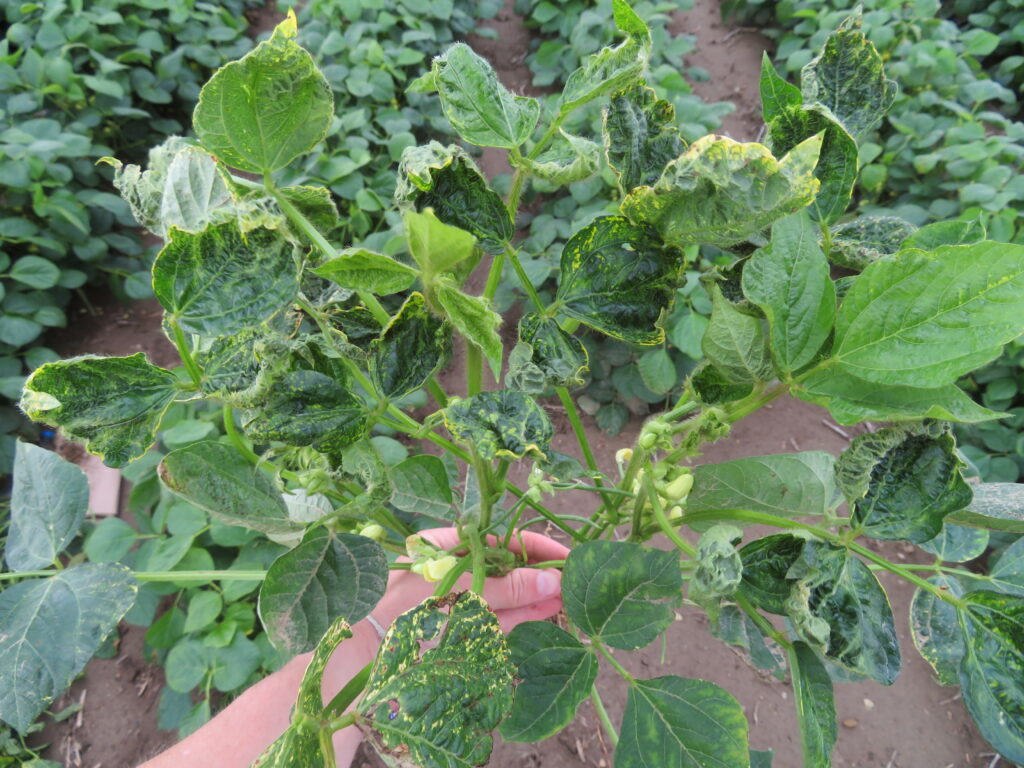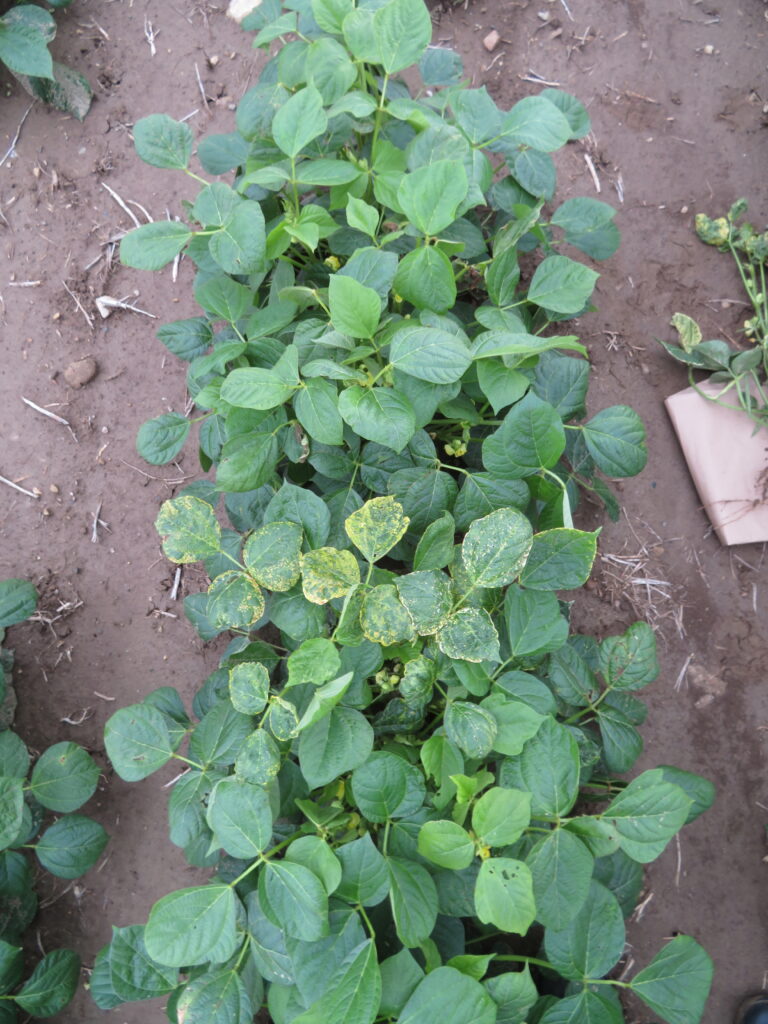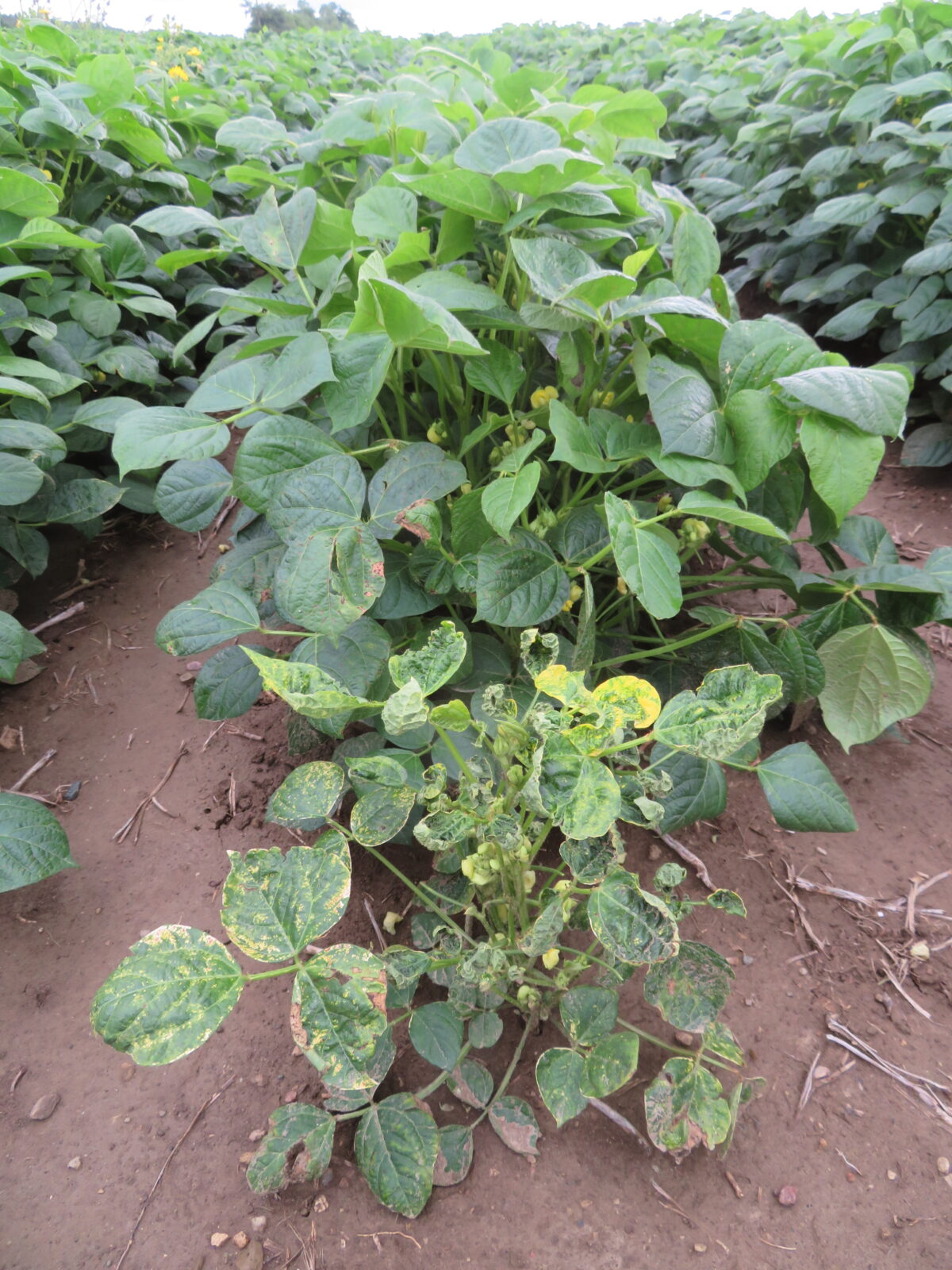Description
Alfalfa mosaic virus (AMV), also known as Lucerne mosaic virus or Potato calico virus, can infect over 600 plant species in 70 different plant families, inlcuding dry beans, soybeans, peas, alfalfa, potato, peppers, sow thistle, vetch, nightshades, annual medic species, and clover species, to name a few. Transmission can occur on seed, but in Ontario dry beans is most likely transmitted by aphids or leafhoppers from one plant or field to another. At least 14 insect species in the order Hempitera (true bugs with piercing-sucking moutparts) are known to vector AMV.
In one on-farm scenario in Ontario, AMV symptoms appeared in dry beans after leafhoppers migrated from neighbouring alfalfa field after it was cut. Individual plants across the field were found with symptoms, and symptomatic plants produced few or no pods, but overall the impact was negligable in this example scenario.
Symptoms
It is difficult to visually differentiate AMV symptoms from other virus symptoms in dry beans. Symptoms include mottled yellow and dark green leaves, yellow spots on new leaves, brown discolouration and stunting. Leaves may be distorted, cupped or wrinkled. Later infections can cause bud blight, top stem death, poor pollination, and misshapen pods. Virus infection through a field can cause uneven maturity and affect overall plant vigour and pod fill.
Management Strategies
- The virus does not survive more than a few hours on insect vectors, so controlling insects may not significantly decrease incidence of the virus in farm fields. Seed- applied insecticides have not proven effective in reducing aphid transmission. Winged aphids move readily and can quickly spread a virus in a field.
- Planting US-grown, inspected and certified seed may lower the risk of seed borne viruses.
- Bean fields planted in close proximity to perennial legumes or vegetable crops may have higher risk of infection, as these crops may harbor bean viruses or virus spreading aphids.



References
Alfalfa Mosaic Virus, Wikipedia
